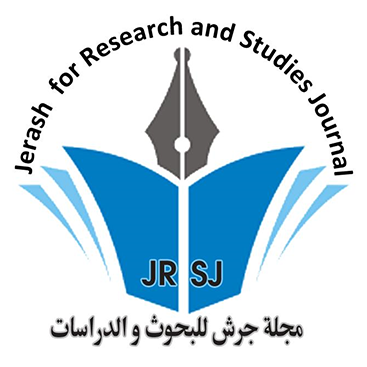Jerash for Research and Studies Journal مجلة جرش للبحوث والدراسات

Abstract
The present study deals with the issue of placing grammatical diacritics on the appositive and parsing it on the basis of its original position as related to another noun which is followed by it in apposition and disregarding its pronunciation. The study also distinguishes between this phenomenon and other similar ones such as placing diacritics according to pronunciation, meaning and self-delusion. Moreover, it dis-cusses the disagreement among the grammarians with respect to the conditions they put to approve this phenomenon. Ten syntactic issues which have been the opject of the grammarians interest and controversy show the aspects and branches of this phenomenon in addition to the grammarians view points about it. There include :I. The appositives of the noun of "inna " and its "sisters". 2. The appositives of the noun of "laa" of exoneration. 3. The appositives of the single vocative. 4. The appositives of the complement of an extra preposition. 5. The appositives of the thing from which the exception is made. 6. The appositives of the opposed to a verbal noun. 7. The appositives of the opposed to the participle. 8. Appositives on the place of "faa", which occurs in the position of response to a request. 9. A case where apposition on the basis of position is obligatory. 10. Sentences that have a parsing position. Various issues have been discussed within the section of' the five appositives : attribute, emphasis, substantive and the two branches of apposition, i.e., exploitative apposition and coordination. Extracts from the Holy Qura'n Poems and sayings of the Arabs in the age of protest sup-port a variety of syntactic view points in this respect. Each controversial issue ends with a modest opinion of the researcher. Besides, the study arrives at the fact that the issue of placing grammatical diacritics on the appositive on the basis of its original position in relation to the word to which it is placed in apposition, has gained its significance from the rearrangement and correction of the syntactic rules by means of which some diacritics are placed wrongly, not following the common rules, in some texts. There texts are taken from the Holy Qura'n and extracted from some poems representing various syntactic aspects. Finally, the researcher hopes that the present study has treated all the relevant issues of this phenomenon and discussed its various branches
Recommended Citation
Saleh, Qasim
(2008)
"The Phenomenon of Load on the Position,"
Jerash for Research and Studies Journal مجلة جرش للبحوث والدراسات: Vol. 9:
Iss.
2, Article 1.
Available at:
https://digitalcommons.aaru.edu.jo/jpu/vol9/iss2/1

